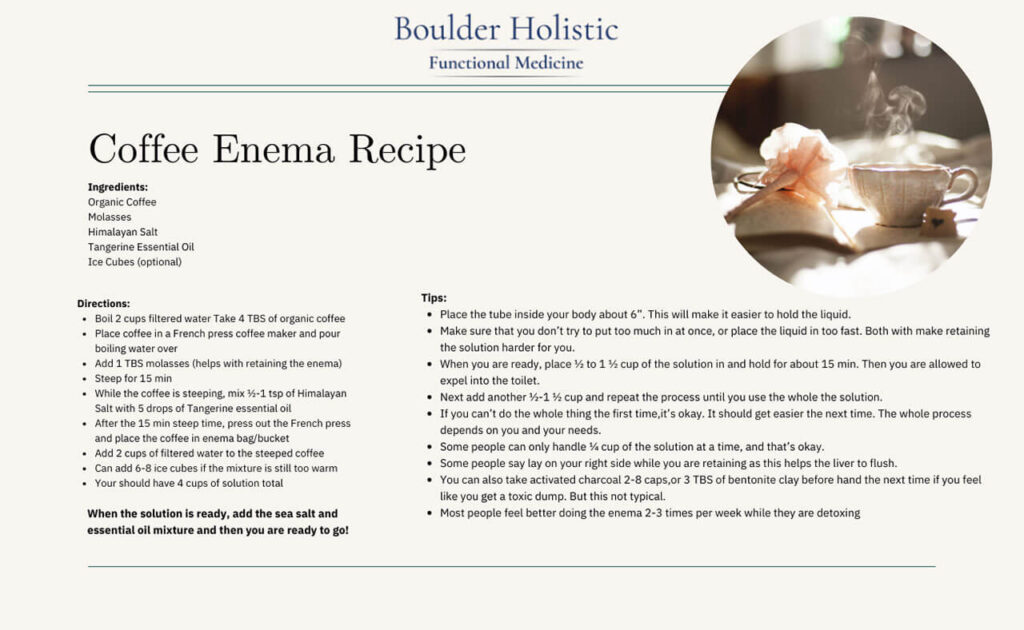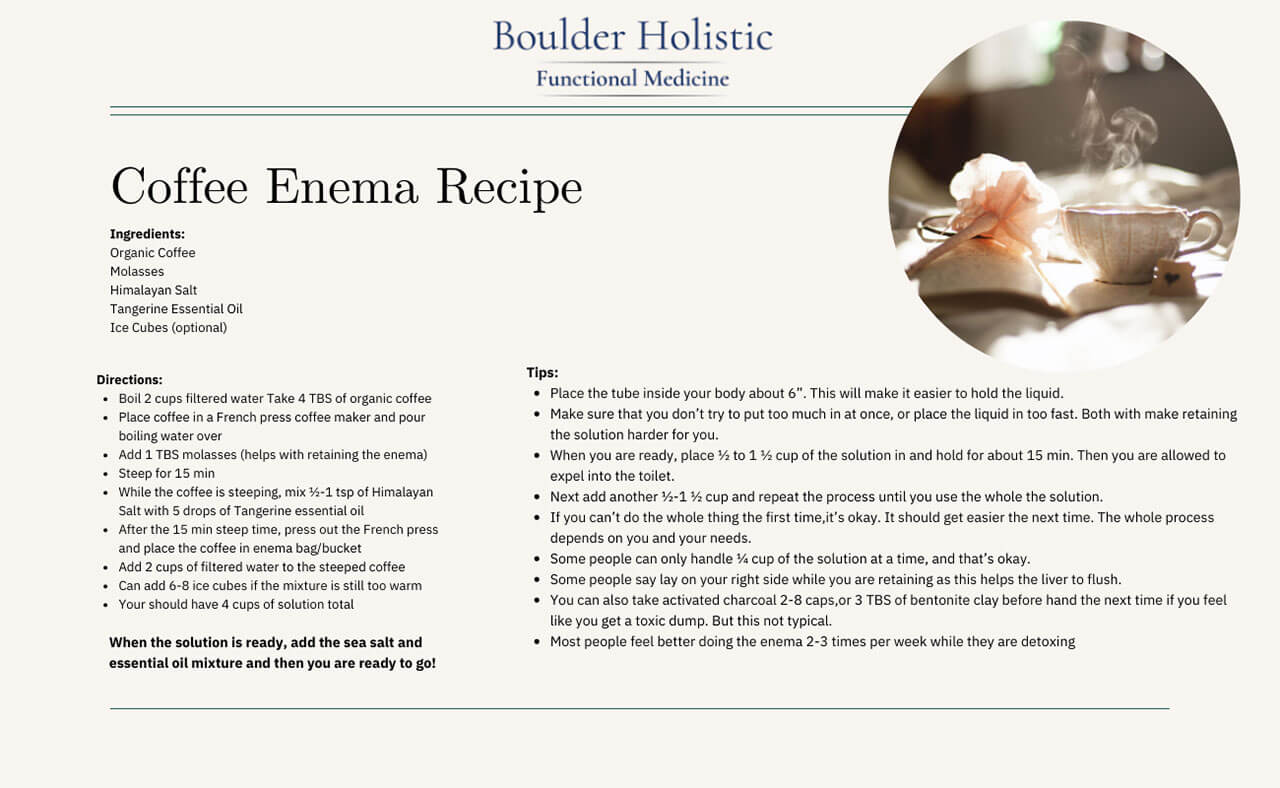
Coffee Enemas: A Comprehensive Guide on How to Do Them Safely and Effectively
The practice of using coffee enemas has gained a following in recent years, touted by some as a powerful detoxifying tool. While the idea of introducing coffee directly into the colon may seem unusual, proponents claim a range of benefits, from improved liver function to enhanced energy levels. However, it’s crucial to approach this practice with caution and a thorough understanding of the potential risks and benefits. This article provides a comprehensive overview of how to do a coffee enema, addressing safety concerns, outlining the process, and offering a balanced perspective on its use. Before starting, consult with a healthcare professional to ensure it is appropriate for you.
Understanding Coffee Enemas: The Basics
A coffee enema involves introducing a solution of brewed, caffeinated coffee directly into the rectum and colon. Unlike an oral consumption of coffee, where it’s primarily processed by the digestive system, a coffee enema allows the caffeine and other compounds in coffee to be absorbed through the walls of the colon. The purported mechanism of action, as described by some practitioners, revolves around the stimulation of the liver, specifically the production of glutathione, a powerful antioxidant. This process is believed to facilitate detoxification and the elimination of waste products from the body. The idea is that the coffee solution stimulates the liver to produce more bile, which then carries toxins into the intestines for elimination. The caffeine also stimulates the colon, promoting peristalsis (muscle contractions) and aiding in bowel movements.
The Potential Benefits: What Advocates Claim
Advocates of coffee enemas often cite a range of potential benefits. These include:
- Detoxification: The most common claim is the enhanced detoxification of the liver and the body.
- Improved Liver Function: The stimulation of glutathione production is believed to support the liver’s detoxification processes.
- Increased Energy Levels: Some users report increased energy and vitality after a coffee enema.
- Relief from Constipation: The enema can stimulate bowel movements, providing relief from constipation.
- Improved Mental Clarity: Some individuals report improved cognitive function and mental clarity.
It’s important to remember that many of these claims are anecdotal and not supported by robust scientific evidence. Research on coffee enemas is limited, and the specific mechanisms and effectiveness are still under investigation. Furthermore, individuals with underlying health conditions should be particularly cautious. [See also: Coffee Enemas and Liver Health: What the Science Says]
Safety First: Important Considerations and Risks
Before attempting a coffee enema, it’s crucial to be aware of the potential risks and take necessary precautions:
- Electrolyte Imbalance: Frequent use of coffee enemas can disrupt the body’s electrolyte balance, potentially leading to dehydration and other complications.
- Infection: If the equipment is not properly sterilized, there is a risk of introducing bacteria into the colon, leading to infections.
- Bowel Perforation: In rare cases, improper insertion of the enema tube can lead to bowel perforation.
- Caffeine Overdose: While less likely than with oral consumption, it’s still possible to experience caffeine-related side effects such as rapid heartbeat, anxiety, and insomnia.
- Dependency: Over-reliance on coffee enemas can make the colon less efficient at natural bowel movements.
- Interactions: Coffee enemas may interact with certain medications.
Always consult with a healthcare professional before attempting a coffee enema, especially if you have any underlying health conditions such as heart problems, kidney disease, or inflammatory bowel disease. They can help assess whether it is safe for you and guide you through the process.
What You’ll Need: Essential Equipment
To safely perform a coffee enema, you will need the following equipment:
- Enema Bag or Bucket: Choose a dedicated enema kit designed for this purpose.
- Enema Tube: The tube should be made of medical-grade material and be properly cleaned and sterilized before each use.
- Clamp: To control the flow of the coffee solution.
- Lubricant: Water-based lubricant (e.g., KY Jelly) to ease the insertion of the tube.
- Organic Coffee: Use organic, caffeinated coffee that is specifically roasted for enemas. Avoid instant coffee or coffee with additives.
- Distilled Water: For brewing the coffee solution.
- Thermometer: To ensure the coffee solution is at the correct temperature.
Step-by-Step Guide: How to Do a Coffee Enema
Follow these steps carefully to perform a coffee enema safely and effectively:
- Prepare the Coffee Solution: Brew one liter of organic coffee using distilled water. Allow the coffee to cool to body temperature (around 98-100°F or 37-38°C). Use a thermometer to ensure the correct temperature.
- Prepare the Enema Kit: Clean and sterilize all equipment. Hang the enema bag or bucket at a comfortable height (e.g., a few feet above the floor). Clamp the tube to prevent the solution from flowing prematurely.
- Lubricate the Tube: Apply a generous amount of water-based lubricant to the tip of the enema tube.
- Position Yourself: Lie on your side on a comfortable surface (e.g., in a bathtub or on a towel). The left side is often recommended.
- Insert the Tube: Gently insert the lubricated enema tube into your rectum, about 2-4 inches. If you encounter resistance, stop and try a different angle.
- Release the Clamp: Slowly release the clamp on the tube to allow the coffee solution to flow into your colon. If you experience cramping, slow the flow or stop it briefly.
- Retain the Solution: Once the bag is empty, remove the tube and try to retain the coffee solution for 12-15 minutes. Use deep, slow breaths to help relax your abdominal muscles.
- Eliminate the Solution: After retaining the solution for the recommended time, go to the toilet and eliminate the solution.
- Clean Up: Thoroughly clean and sterilize all equipment after each use.
Important Considerations: Tips for a Safe and Effective Experience
Here are some additional tips to ensure a safe and effective coffee enema:
- Start Slowly: If it’s your first time, start with a smaller amount of coffee solution to gauge your tolerance.
- Listen to Your Body: If you experience any discomfort or pain, stop the procedure immediately.
- Hydrate: Drink plenty of water before and after the coffee enema to stay hydrated.
- Avoid Frequent Use: Do not use coffee enemas frequently, as this can disrupt your body’s natural bowel function.
- Monitor Your Body: Pay attention to how your body feels after the coffee enema. If you experience any negative side effects, discontinue use and consult with a healthcare professional.
- Use Quality Coffee: The quality of the coffee is important. Use organic, mold-free coffee beans to avoid potential health risks.
Potential Side Effects: What to Expect
While coffee enemas are generally considered safe when performed correctly, some side effects may occur:
- Cramping: Mild cramping is common during the procedure.
- Diarrhea: You may experience diarrhea after the coffee enema.
- Electrolyte Imbalance: Frequent use can lead to electrolyte imbalances.
- Fatigue: Some individuals may feel tired or weak after a coffee enema.
- Headaches: Some people report headaches.
If you experience severe side effects, such as severe abdominal pain, blood in your stool, or persistent nausea, stop using coffee enemas and seek medical attention.
Alternatives to Coffee Enemas: Exploring Other Detoxification Methods
If you’re interested in detoxification, there are several alternative methods to consider:
- Healthy Diet: Following a balanced diet rich in fruits, vegetables, and whole grains is a natural way to support detoxification.
- Adequate Hydration: Drinking plenty of water helps flush out toxins from your body.
- Regular Exercise: Exercise promotes circulation and helps eliminate waste products.
- Herbal Teas: Certain herbal teas, such as dandelion root tea and milk thistle tea, are believed to support liver function.
- Sauna: Using a sauna can help with detoxification through sweating.
Always consult with a healthcare professional before starting any new detoxification program. [See also: Natural Detoxification Methods: A Comprehensive Guide]
The Bottom Line: Should You Try a Coffee Enema?
Coffee enemas are a controversial practice. While some users report positive experiences, the scientific evidence supporting their benefits is limited. It’s crucial to approach coffee enemas with caution, understanding the potential risks, and consulting with a healthcare professional before attempting them. This article is intended for informational purposes and does not constitute medical advice. If you’re considering a coffee enema, weigh the potential benefits and risks carefully and prioritize your health and safety. Consider the information provided here as guidance, not as a definitive endorsement.
In conclusion, while the allure of detoxification and the potential benefits of coffee enemas may be appealing, a balanced and informed approach is essential. Always prioritize your health and safety, consult with a healthcare professional, and make informed decisions based on your individual needs and circumstances.


